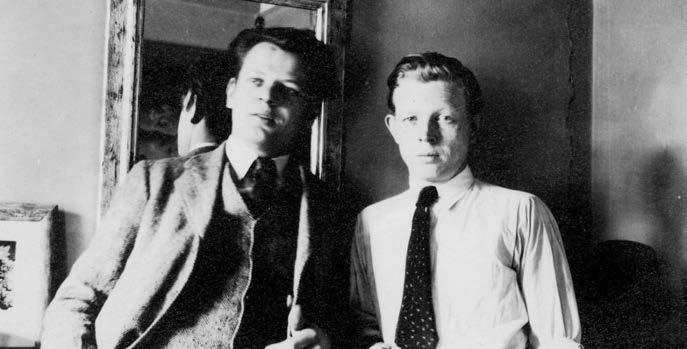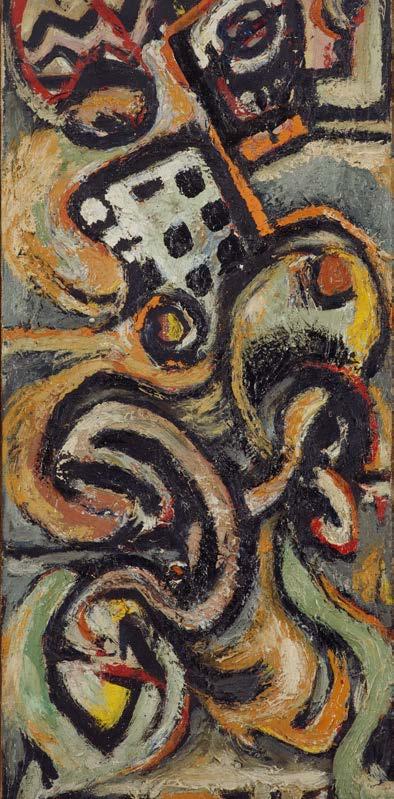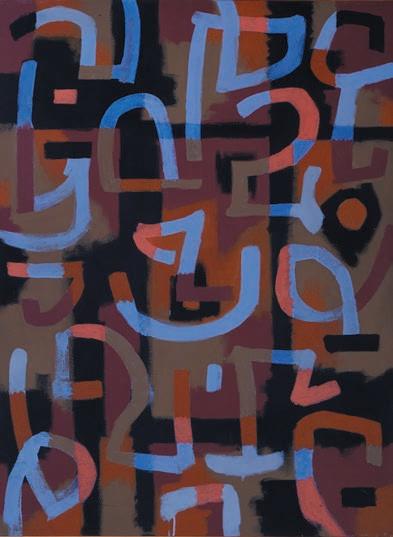
3 minute read
Art Exhibitions
Tickets are $10 • No charge for Four Arts members The Four Arts app ■ www.fourarts.org ■ boxofficestaff@fourarts.org ■ (561) 655-7226
Don’t miss Charles and Jackson Pollock
Charles and Jackson Pollock brings together, for the first time, art by two brothers: Jackson Pollock (1912-1956), the most famous and arguably most important American painter of the 20th century, and Charles (1902-1988), his eldest brother, whose career and reputation are less well-known. The exhibition is cocurated by Four Arts President & CEO Philip Rylands and Otto Hübner, and underwritten by members of the exhibition’s eponymous Leadership Committee.
Jackson Pollock’s gestural drip painting became the prototype of what Harold Rosenberg would call “Action Painting” and the hallmark of Abstract Expressionism, the first American avant-garde of international influence.
This exhibition features around 25 works of Jackson Pollock, revealing a side of the artist little known to the general public through paintings, drawings, his sole surviving sculpture, and a wide selection of prints.
“The prints, drawings, and pages from a sketch notebook reveal more of his inner workings,” said Rebecca A. Dunham, The Four Arts’ head of fine arts and curator. “You can see him working out ideas before implementing them in a finished artwork. Most people know of Jackson Pollock from his drip paintings, but this exhibition touches upon other aspects of his life and his creative family.”
Charles took up painting and drawing at the age of 15, fascinating his four younger
Charles Pollock, Untitled [Post-Rome], Blue Green Black, 1964, oil on canvas, 60 by 60 in. Courtesy american contemporary art GALLERY, Munich. © Charles Pollock Archives, Paris
Charles and Jackson Pollock
ON DISPLAY
Now through Sunday, March 28 Esther B. O’Keeffe Building, 102 Four Arts Plaza
DAYS AND TIMES
Monday: 10 a.m. to 5 p.m. Tuesday - open to Four Arts members only: 1 to 5 p.m. Wednesday through Saturday: 10 a.m. to 5 p.m. Sunday: 1 to 5 p.m.
Charles and Jackson Pollock is curated by Philip Rylands, President of The Society of the Four Arts, and Otto Hübner, and is organized by The Four Arts.


Jackson, left, and Charles Pollock photographed in New York in 1930. © The Pollock-Krasner Foundation, New York
brothers, and encouraged Jackson to pursue art. It was Charles who brought Jackson to New York City to study at the Art Students League under Thomas Hart Benton, and both were indoctrinated with Benton’s Regionalism. While Jackson stayed on in New York City and became a central figure in the nascent avant-garde, Charles worked for the Resettlement Administration in Washington and for the WPA before accepting a professorship at Michigan State University. He too, in the mid-1940s, turned to abstraction.
The exhibition displays about 70 of Charles Pollock’s works, including a wide variety of drawings, prints, and paintings organized chronologically into thematic groupings. Visitors can trace Charles’ development from his Chapala series in the 1950s to his “PostRome” works in the 1960s to his Arches series in the 1980s.
“Charles’ work is more structured and resembles ‘color field’ painting,” Dunham said. “It’s more contemplated, where Jackson’s work is more about whatever was flowing creatively out of him at that moment. Charles has a different mode of operation, a different way of creating an abstract work.”
Hübner, the director of the American Contemporary Art Gallery in Munich, Germany, which represents Charles Pollock’s estate, helped The Four Arts organize the exhibition.
The exhibition also features two four-legged stools used by Jackson Pollock as he produced his works, along with two photos of Jackson at work by famed art photographer Hans Namuth. A self-guided tour is available for smart devices by clicking on fourarts.oncell.com.
The Four Arts hopes that visitors to this exhibition gain a deeper understanding of Jackson Pollock and a welcome introduction to Charles Pollock.
“While Jackson Pollock was the more important painter during his lifetime,” Dunham said, “this show sheds light on the fact that Jackson had an older brother Charles who was also an extremely gifted and talented painter.”

Jackson Pollock, Composition with Motif of Small Squares, 1938-41, oil on canvas, 22.3 by 14.1 in. Private collection

Charles Pollock, Chapala 5, 1956, oil and tempera on canvas, 48 by 36.4 in. Courtesy american contemporary art GALLERY, Munich. © Charles Pollock Archives, Paris








